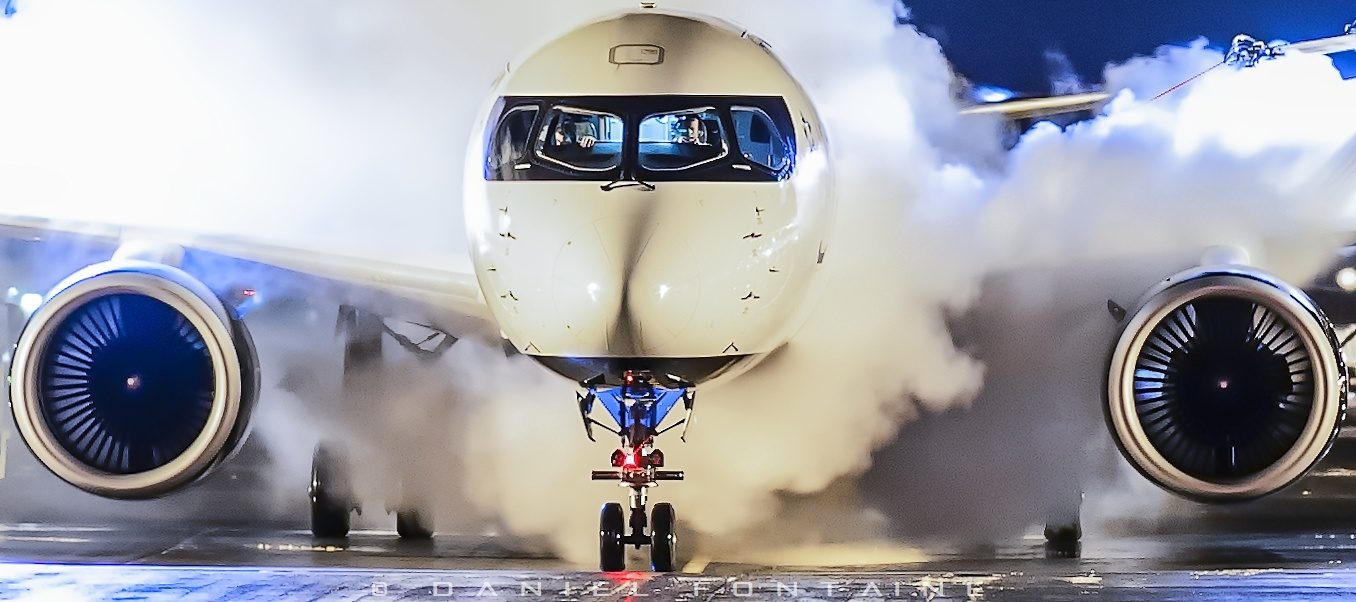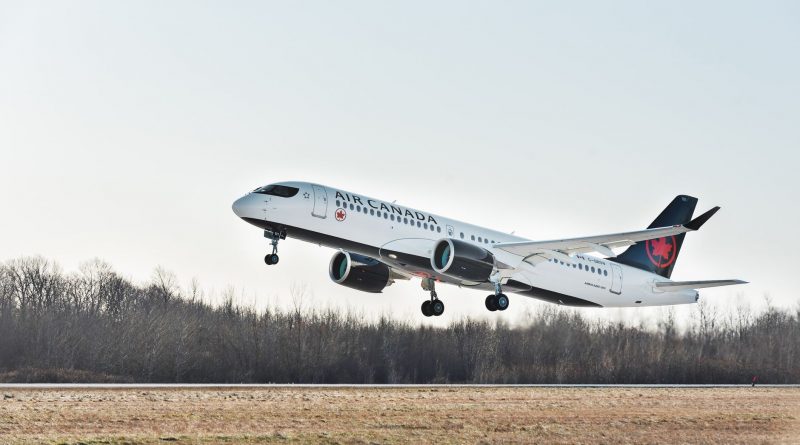Air Canada, managing the fleet in pandemic times
I had the opportunity to speak with Air Canada Vice President Network Planning and alliances, Mr. Mark Galardo. He is 36 years old and now has a 16 years career. His field of expertise is network development and management. He is one of the main architects of the development of Montréal-Trudeau as an international hub. From 2009, he developed flights between Montreal and other French-speaking cities. He was also actively involved in the decision to purchase A220-300s. In 2019, he was named one of Canada’s Top 40 Under 40 managers. Recently, he recorded a video announcing the new flights for the summer.
During the interview, we discussed fleet management challenges during the pandemic as well as Air Canada’s recovery strategy.
Planning during uncertainty
Normally, airlines are able to manage their aircraft fleets months and years in advance. Among other things, they use their reservation system, which allows them to predict demand almost 12 months in advance. For the longer term, they use economic and demographic data.
But COVID19 has completely annihilated the possibility of forecasting in the medium and long term. Mr. Galardo explains that Air Canada estimates it will take 36 months for a return to normalcy. In order to plan better, he divided his fleet management into three distinct periods: 0 to 3 months, during this period it meets and adjusts to current needs. 3 to 18 months is the recovery period once the first wave of the pandemic is under control. 18 to 36 months, it is related to what Air Canada will look like after the pandemic.
The lack of planning
Mr. Galardo emphasizes that he is still in his 0 to 3 months management mode. Its greatest difficulty in planning is the lack of timelines in lifting the quarantine for inbound travelers. For the moment, the Canadian government maintains the quarantine for all foreign travelers regardless of their origin. Mr. Galardo believes it is time for the Canadian government to consider a science-based approach to relaxing quarantine requirements in order to achieve a better balance for travelers and the Canadian economy without harming public health. He gives the example of European countries that have lifted the quarantine for travelers coming from countries where the epidemic is under control.
Currently, travelers are leaving Canada for Europe without having to self-quarantine upon arrival. But on their return, these same travelers must quarantine themselves. For Mr. Galardo, Canadian government rules are a major obstacle to the country’s economic recovery. In addition, the Maritime provinces continue to impose a quarantine on Canadians from other parts of the country. Air Canada must therefore manage its fleet taking into account the two zones where there are some quarantines.
Considering the evolution of knowledge about COVID19, Mr. Galardo believes that the partial reopening of borders is possible. In fact, Air Canada’s chief medical officer has tabled a proposal with a science-based approach. Unfortunately, the Canadian authorities did not follow through. The publication of a reopening protocol as well as a timeline would be of great help to Mr. Galardo.
Editor’s note
I observe that since the beginning of the pandemic, the Canadian government has only adopted coast to coast measures. All citizens and businesses are systematically considered equal. As if there was only one Canada without regional and sectoral disparities.
Recovery
Air Canada’s recovery management will be similar to that of most major airlines; We must first re-establish the “hubs” so that they become profitable again. This implies that not all routes will be re-established. During the recovery phase, only the connections that can be profitable in the short term will be re-established. It goes without saying that the application of this phase depends on the intensity of the second wave of COVID19. Another key factor in the resumption of air transport is the development of a vaccine. Air Canada will therefore have to re-establish the Vancouver, Toronto and Montreal “hubs” in order to ensure its transition to normality.
However, Mr. Galardo is concerned about the lack of a Canadian policy to support strategic industries. He gives an example of the strategic and nerve-racking importance of the aerospace industry in Quebec and Canada. According to him, this sector, which is a pillar of the Canadian economy, is now very weakened due to the crisis. Without specific support for the aerospace industry, the entire Canadian economy and consequently Air Canada will suffer.
Opportunities to seize
Air Canada’s growth strategy has been based on the Sixth Freedom of the Air for almost 10 years now. Basically, it’s about getting international passengers entering and leaving the United States through a Canadian hub. Air Canada is following closely everything that happens south of the border with great interest.
Mr. Galardo emphasizes that Air Canada’s growth strategy hasen’t change with the pandemic. He believes that the recovery period for US airlines will offer business opportunities: during the recovery, the post-pandemic Canadian market will offer few attractions to American carriers. This will leave the field open to Air Canada for trans-border flights.
In addition, American carriers will have to reduce their offeron the weaker domestic and foreign markets. Some of the abandoned routes may be compatible with those of Air Canada. It will then be a question of adjusting cross-border destinations according to markets neglected by American competitors.
A220-300
I took the opportunity to ask Mr. Galardo a few questions about the A220-300. Currently, Air Canada under-utilizes all of its aircraft which includes the A220-300. Under these circumstances, it is difficult to draw a true picture of the reliability and operating cost of the A220. However, Galardo mentioned that in terms of fuel consumption, the A220 is very efficient and it will meet Air Canada’s needs better after the crisis due to its good size. In addition, with the volume decrease, it is a very effective replacement on flights normally flown in A321. Air Canada remains optimistic about its usefulness within its fleet.
>>> Follow us on Facebook and Twitter

